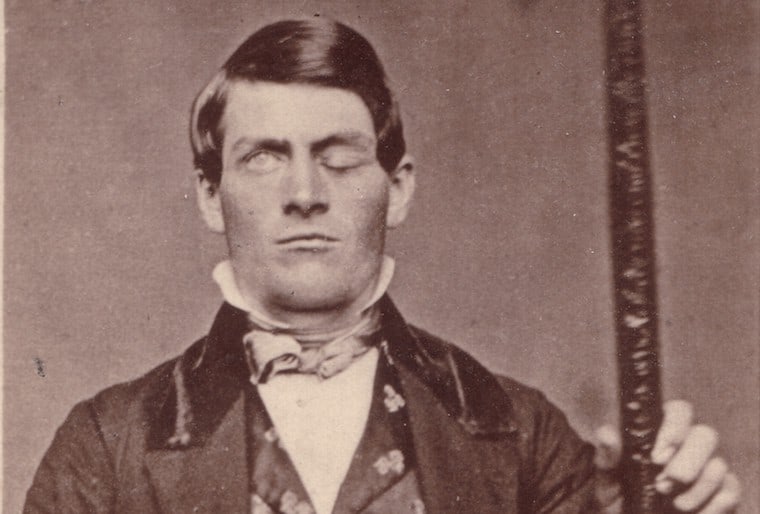The afternoon of September 13, 1848, probably seemed like any other to Phineas Gage. Gage worked for the Rutland & Burlington Railroad company, and that morning he was helping to lay tracks for a new route that ran just south of Cavendish, Vermont. Gage directed his crew through the process of clearing rocks from the path of the railroad. It was a job that could be dangerous, of course. The workers had to drill holes down into the rocks, push explosive powder into the holes, and then stand clear as the blast pulverized the rocks. As one might imagine, deadly accidents were tragically common among railroad workers who worked with explosives.
But what was about to happen to Gage was anything but common. At about 4:30 PM, Gage was using a tamping iron, an iron bar that weighed about 13 pounds, to push sand over the blasting powder in one of the holes drilled into the rock. At the same time, he was distracted by some men working behind him and turned to say something to them. As he did so, he moved his head directly over the hole. And in a freak accident, his tamping iron struck the rock at that exact moment. The iron created a spark as it hit the rock and the blasting powder immediately exploded.

The explosion shot the tamping iron out of the hole in the rock like a bullet. The iron hit Gage just in front of his jawbone, and the force of the explosion drove it into his head. The iron passed through the mouth and traveled just behind his left eye. And as it continued moving upward, the iron punctured the bottom of his skull and traveled through his brain before finally punching out of the top of his skull. Gage was knocked onto his back as his arms and legs began to twitch rapidly.
Other railroad workers rushed to the scene, sure that Gage was already dead. But Gage was still alive. Within a few minutes, he was even able to speak, or at least speak as well as anyone who has just had an iron rod fired through his skull can. A few minutes later, Gage was on his feet and walked to a waiting cart with little help. As the cart carried Gage back to town, one of the railroad workers found the tamping rod. It had come to rest 80 ft from the explosion. Parts of Gage’s brain still clung to the metal.

In the nearby town, Gage waited for the arrival of Dr. Edward Williams. When Williams arrived Gage greeted him with a joke, saying, “Doctor, here is business enough for you.” Williams began his examination, noting that he could see the brain pulsing through the hole in Gage’s skull. Gage continued to speak to bystanders about how he was injured. The only sign that something was wrong came when Gage suddenly stood up and vomited, and the force actually pushed some of Gage’s brain out of the top of his skull. “About a teacup’s worth” of brain tissue dropped onto the deck. Things were about to get much worse for Gage before they got any better.

